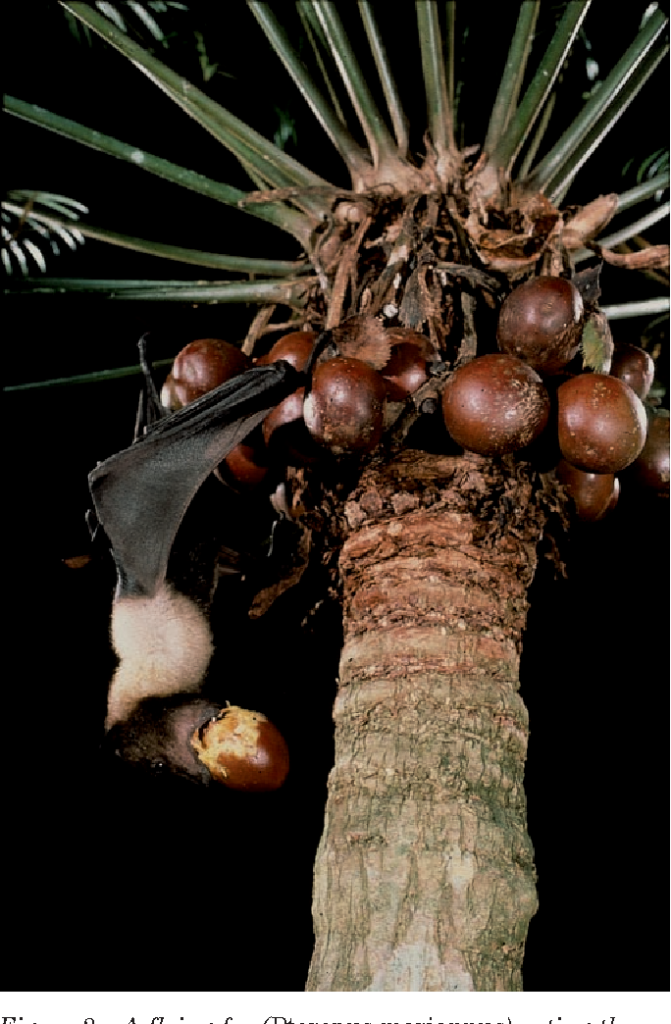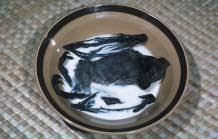
In this issue we are pleased to publish an interview with Drs Oliver Sacks and Paul Cox, following their recent research which suggested that eating flying foxes was responsible for an isolated cluster of ALS-parkinsonian-dementia complex found in the Guam peninsula. As an interesting counterpoint to this article, we are also publishing a commentary by Dr Huw Morris. Dr Morris, who spent some time in Guam, is able to rely on his own experiences and local knowledge and contacts to provide a cautionary note.
What are characteristic clinical features of ALS-Parkinson dementia complex?
There can be separate presentations of a motor neurone disorder (with wasting and spasticity, ultimately death from bulbar palsy), parkinsonism (usually with marked rigidity and akinesia, less tremor, than in ordinary PD), and a dementia (often presenting as an amnesic syndrome) – or these can co-exist in a single individual. ALS-like presentations were much commoner in the earlier days, whereas parkinsonism-dementia ones predominate now – OS
What has happened to the disease since the second world war?
The disease has become much rarer, altered its presentation (as noted above) and its age of onset: back in the early 1950s there were people in their twenties affected, now they are mostly late middle-aged or elderly people. No-one (or very few people) born after 1960 seems to have contracted the disease – though there may be, apparently, an ‘incubation period’ of decades between the initial ‘event’ (infectious, toxic, whatever) and the appearance of the complex – OS
How common is the condition in people migrating to and from Guam?
The 100,000-odd Chamorros in California (many of whom left Guam forty years ago) have the same incidence of diseases as those in Guam. The disease is almost or virtually unknown except in the native Chamorro population of Guam (and the native populations of the Kii peninsula and two villages in Irian Jaya, where a similar disease occurs). Migrants to Guam do not, apparently, get affected – OS ALS-PDC is a disease primarily of the Chamorro people, but did not characterise non-Chamorro residents on Guam unless they adopted a traditional Chamorro lifestyle – PC
What is the evidence for a genetic as opposed to an environmental cause for this condition?

The evidence against a genetic causation is the absence of clear ‘Mendelian’ patterns of inheritance. The epidemiological evidence (or hint) of environmental determinants comes from the confinement of the disease to Guam (and two other places), and its much higher incidence, in Guam, in certain villages. Again it is known that cycads are full of neurotoxins – neurocycadism has long been recognised among cattle in Australia who browse on the Macrozamia there – and careful washing etc is required. But there could also have been an infectious cause of lyticobodig (ALS-PD), an inapparent infection (as often happened with those who subsequently developed postencaphalitic parkinsonism and other postencephalitic parkinsonism syndromes – OS
Why flying foxes as causative animal?
Because flying foxes native to Guam feed on the native cycads there, and may bioconcentrate some of their (lipophilic) toxins.
Support for an environmental cause is suggested by the coincidence between the decline of lyticobodig after 1960 with the decline in eating of cycad flour (long-noted) and the virtual extinction of the native cycad-eating bat around the same time (which we are now noting) – OS
The Chamorro diet and indeed the Chamorro cultural character were uniquely characterised during the twentieth century by mass consumption of flying foxes which led to the extinction of one flying fox species on Guam and the near-extinction of the other species. This in turn led to the importation of other flying fox species from other island nations where cycads do not play a prominent role in the vegetation. As a result of the change in sources of flying foxes, the putative ingestion of biomagnified cycad neurotoxins began to decrease in the 1960s and reached negligible levels in the 1970s when the entire genus Pteropus in Guam teetered on the edge of extirpation. The rise and fall of consumption of Guam flying foxes was shadowed by a rise and fall of the incidence of ALS-PDC in Guam – PC

Do other communities eat flying foxes and if so do they have a similar condition?
In parts of Polynesia, flying foxes were eaten, but never with the same relish or in their entirety as they are in Guam. And, in those islands of Polynesia where they are eaten, cycads do not play an important role in the vegetation. These islanders do not show higher levels of ALS-PDC – PC
Is there evidence for a similar aetiology in the recently described PD-like illness endemic in Guadaloupe?
At present different phytotoxins are under suspicion in Guadaloupe, namely those present in soursops and other Annoneaceae – very potent infusions of these are widely used in folk medicine there. There has been no suggestion of an animal vector – OS
How can the theory be proven?
- By chemical analysis of carcasses of (preserved) Guamanian bats.
- By seeing if they have any neurological lesions similar to those of ALS-PD.
- By feeding other bats on cycads and seeing if they in fact accumulate and concentrate on the toxins – OS Abraham Hospital.

